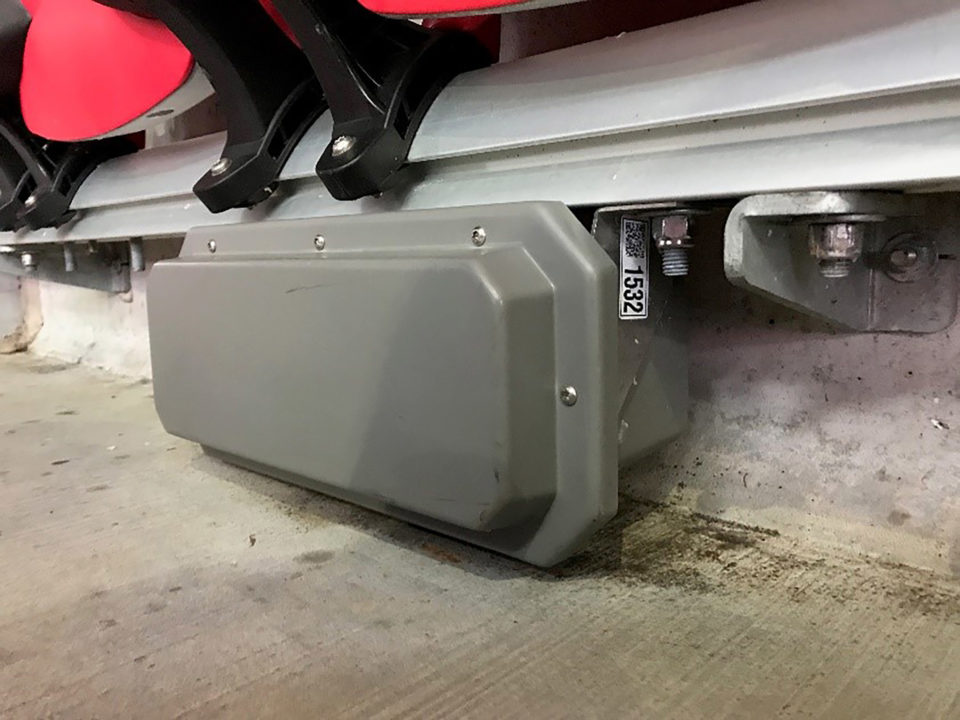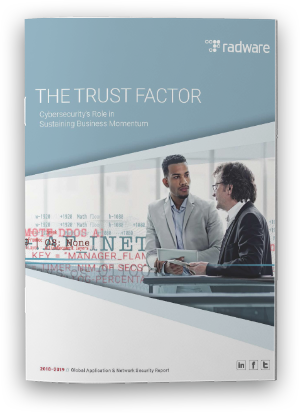Over the last few years I have traveled around the world, researching and watching stadiums digitally evolve from the structures I once knew as a kid. I grew up watching the San Diego Chargers play in what was then called Jack Murphy Stadium and now find myself looking at stadiums from a totally different perspective.

As Super Bowl 53 approaches, my attention, along with Radware’s ERT, turns to the crowds and the target rich environments created by high profile sporting events. This Super Bowl, like years before, will bring large crowds once again that will demand connectivity and are expected to consume record breaking volumes this year. Extreme Networks reported that last year’s attendees at Super Bowl 52 in Minnesota transferred 16.32 Terabytes of data with a peak rate of 7.867 Gbps! This is an enormous demand for connectivity and the technology involved could poses a security risk for event organizers, partners, sponsors and attendees as their activities in the stadium begin to produce more digital oil-data.
A Seamless Digital Game Day Experience
There are few sporting events in the world as large as the Super Bowl. Last year there was an estimated 103 million viewers. The Super Bowl generates a lot of excitement from media, fans and the public. Beyond the hype of the game itself, there is a variety of multimedia technology available to fans, providing a more immersive and interactive experience. These experiences include Super Bowl Live, a 6-day series of concerts and events in Centennial Olympic Park in Downtown Atlanta, and the Super Bowl Experience, an 8-day event full of exhibits and interactive games inside the Georgia World Congress Center. Other events also include the Verizon Experience, which will showcase how 5G wireless technology will change the fan experience in stadiums going forward (something I’m personally looking forward to seeing).
To ensure Super Bowl attendees have a seamless digital experience, the NFL, Georgia World Congress Center, AMB Sports and Entertainment Group, and leading wireless carriers have made major investments into the construction and deployment of the current networks surrounding the stadium in order to maintain a high quality of service for the attendees and vendors at the Super Bowl. The stadium provides 15,000 Ethernet ports, 1,800 access points and a Distributed Antenna System (DAS), for enhanced cellular coverage. The DAS system is owned by the stadium and rented out to the four major US cellular carries for additional coverage. The stadiums WiFi is also provided by AT&T and consists of two redundant 40gb connections. The stadium also contains 2,000 IPTV for delivering game content provide by AT&T’s DirectTV. These features and network help ensure fans can watch, eat, share, download and communicate their game day experience with others.
When it comes to planning for the future, the stadium has pulled its fiber optics as close to the access points as possible, terminating in mini intermediate distribution frames (IDF) throughout the stadium. The network gear is from Aruba and Hewlett Packard Enterprise while others involved with the network include IBM, Corning and ThinkAmp. Recently, IBM and Corning built one of the more technology advanced stadiums with a blazing fast network for Texas A&M.
[caption id="attachment_9068" align="alignnone" width="768"] Wireless Access Point Under Stadium Seating[/caption]
Wireless Access Point Under Stadium Seating[/caption]
What's more, Mercedes-Benz Stadium also promotes a mobile app. While this app is not as cutting edge as the one for Levi Stadium, for example, it does include information about the stadium, news, scores, as well as viewing, buying and transferring tickets and parking.
Assessing The Risks
There is always a potential risk at large sporting events like the Super Bowl. Even the smallest network outage could leave attendees unable to use their digital tickets to enter the game. Organizations such as the NFL, Patriots, Rams, Georgia World Congress Center, AMB Sports and Entertainment Group, wireless carriers, IBM Cloud, AT&T network or media outlets, as well as those considered partners, sponsors or supporters of Super Bowl 53, should take extra precautions and have an emergency plan in place.
For the Super Bowl, most cybercriminals will be focused on identity and financial theft in the days leading up to the game. These attacks will often be baited with promotions for Super Bowl ticket or a trip giveaway to Atlanta.
One of the other concerns at the Super Bowl will surround protecting critical applications and networks that support the events, hosted both locally and in the cloud. Broadcast networks, industrial control systems, civil-service networks and other related systems are all at risk as well. While there hasn’t been a recent attack of scale reported against the Super Bowl, last year we did witness a piece of malware named Olympic Destroyer that targeted and disrupted the opening ceremonies and entry into the 2018 Winter Olympics.
Indeed, major sporting events create a platform for cybercrime, though recently most cybercriminals have been focused on identity theft by spreading malicious software in a number of ways that’s designed to harvest and steal personal information. Today’s High Density (HD) Stadiums, theaters, arenas and amphitheaters require small cells, WIFI and DAS deployments to serve their demanding environment. Often, the technologies designed to enhance the spectators’ experience, such as Wi-Fi, Bluetooth and other digital services, are easily exploited to harvest information from attendees.
Protect Yourself
Technology can provide a more immersive and rewarding experience for fans, but it also create problems and security risks for those managing the event. Here are a few tips to consider if you’ll be joining me in the chaos next weekend in Atlanta for Super Bowl 53.
- Charge your phone; you're going to need that power to capture the experience
- Ensure your phone is updated with the latest operating system
- Disable Bluetooth when not in use
- Disable Wi-Fi when not in use
- Use the official event Wi-Fi when device is in use ‘attwifi’ (there will be no portal or advertisements. Join to Connect.)
- Always use a VPN when using public Wi-Fi
- Be careful when using ATMs – Understand how to spot and avoid card skimmers gathering card data.
- Exercise caution when presented with pop-ups while browsing
- Avoid NFL-related scams delivered via email.

Read “The Trust Factor: Cybersecurity's Role in Sustaining Business Momentum” to learn more.
Download Now